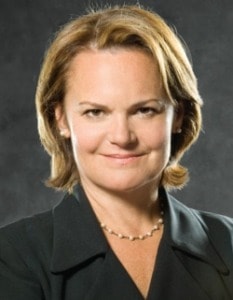One of my first post-college gigs was grant writing at Woolly Mammoth Theatre Company. I’d graduated with a degree in international relations (seasoned with a multitude of theatre classes), and somewhere in the back of my mind I sensed that arts administration could be a legitimate career pursuit. At the time, Woolly’s offices were in the old choir loft of the Church of the Epiphany at 13th and G Streets in downtown Washington, D.C.; performances took place in the Parish Hall, where we set up and took down seating risers almost daily. Woolly’s acting company included some of D.C.’s best and brightest, who were committed to the work onstage as their primary pursuit.

But of course, we all also had second and third jobs. I was working for World Hunger Education Service, whose offices were across the hall, and later the American Historical Association. Others worked for temp agencies, audiobook producers, bars, restaurants, and institutes of higher learning. It was there that I learned the basics of producing theatre professionally—including more than a little about fundraising. Woolly’s co-founding artistic director, Howard Shalwitz, was a talented artist, strategist, and relationship person who showed me the ropes on fundraising from foundations and corporations. Back in those days, it was all telephones and typewriters. We got the job done.
At that time, the resident-theatre movement was in its first two decades, having been launched by theatres such as Arena Stage, the Guthrie, the Alley, Baltimore Center Stage, and others. Woolly decided early on that its ambitions were to grow its infrastructure in a way that best supported the edgy art they put onstage. We often referred to it as an “alternative” to the resident-theatre movement, with no hopes of becoming the next behemoth. At the same time, we knew that Arena Stage and other theatrical activity in Washington had helped create an audience eager for more theatre. This led to both friendly competition and necessary interdependence. Today there are more than 60 theatres in Washington’s bustling cultural scene.
Since then, I have watched theatres like Woolly continue to make an impact artistically, while also serving as drivers within our ecosystem. This impact is unmistakable in the development of exciting new plays, innovative engagement strategies, and talented leaders. Jeffrey Herman, who had been at Perseverance in Alaska, became Woolly’s managing director and later ran Seattle Rep. After several years as development director of Signature in New York, Meghan Pressman became managing director at Woolly and recently started in the same role at Center Theatre Group in Los Angeles, the first woman in that post. In late summer, it was announced that Emika Abe would rise into Pressman’s old position at Woolly, after a few years as associate managing director at the Alliance in Atlanta. And when Shalwitz left Woolly in 2018 after nearly 40 years, Maria Manuela Goyanes succeeded him, following a stint at the Public Theater in New York. So many of our new leaders have gained experience through their work within the resident-theatre community, in large and small companies, as well as from the individuals who devote personal time to mentorship and coaching.
As the decades pass, it is ever more clear that no matter the size, structure, or aesthetic, our theatres operate together in a kind of ecosystem. We feed and support each other, nurturing art and artists, offering leadership opportunities to the next generation, attracting and building younger, more diverse audiences, and exciting donors about the art form’s possibilities. In times of immense change, the sense that “it takes a village” is more resonant than ever. Within this system are strong networks of shared purpose and identity—associations like the League of Resident Theatres, networks of theatres of color, networks of ensembles, and more. There is something to be gained by embracing our commonality. Strength also comes through our cross-pollination, our activism, our commitment to diversity and equity, our sharing of resources. This is sometimes more achievable on a very localized level. But through TCG, as well as other partners, these connections are being made nationally and globally as well.
In an interconnected system, the health and well-being of all its parts are everyone’s concern. We should pose questions like, How do I make you stronger so that I can be stronger, and we can all be stronger? Think of August Wilson, who, after starting with companies like Penumbra Theatre and the Eugene O’Neill Theater Center, developed his work in a “production sharing” model at such theatres as Yale Rep, the Huntington, the Goodman, and Seattle Rep, before their successful Broadway runs.
Our ecosystem is characterized by mobility. Artists move from theatre to theatre to act, design, write; administrators who fall in love with the work in one organization gain skills and progress to increasing levels of responsibility, sometimes in new theatres or communities. In this mobile, interconnected, fertile landscape, there is no one playbook. Knowledge is passed down. It moves sideways; it morphs; it moves back up. As people retire with decades of contributions to the field, an ever-increasing number will rise to take their places. And though today we communicate with smartphones and social media, we are ever more passionate about keeping theatre vital. And we are getting the job done.

